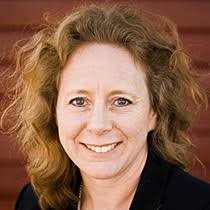Environmental footprint as a foundation for European policies
What if products in your grocery store were labeled with environmental declarations? What if politicians from all around Europe took decisions based on a joint understanding about products’ and organizations’ environmental aspects?
Those are just a few of the fruits that we may be able to harvest from the Product Environmental Footprint process in the EU. In 2013, the European Commission proposed actions to overcome problems on the internal market caused by this proliferation of initiatives to measure environmental impacts. The Product Environmental Footprint (PEF) was established, with a base in the life cycle perspective. Since then the development of the methodology has been going on, with experts from all over Europe.
From a Swedish perspective, Swedish Life Cycle Center and its partners play a significant role. Cecilia Mattsson (Swedish Environmental Protection Agency) has a seat in the Steering Committee and Elin Eriksson (IVL Swedish Environmental Research Institute) is member of the Technical Advisory Board for PEF in the European Commission.
We met Elin Eriksson for a coffee at the Gothenburg office of IVL:
“The idea with PEF is to be a foundation for different policies in the EU. It has a large potential to make a change in the way decisions are made by European politicians!”

Elin herself has spent her last five years in the Technical Advisory Board of PEF, where pilots for different product groups have been studied and experts from all around Europe have given their opinions to the development of the framework. Focus has been on methods, tools and segmentations for different product groups. When the pilot phase ends in April 2018 the transition phase takes over, where the aim is to translate the results from phase one into policies. Among many things, the EU’s Ecodesign Directive will be adjusted in relation to PEF and the framework for procurement will be discussed. By December 2021 the whole PEF process will be finalized and rolled out to the European member states.
But as in all large-scale projects, the PEF process has its challenges. One of them is how to communicate the footprints to consumers:
“I imagine that PEF can result in new kind of labels, for instance like the ones for energy efficiency on white goods, “ Elin says.
Class A+++ to G is something that consumers have learnt how to interpret over the years and when PEF will be introduced, she believes that consumers need to be educated in how to make choices based on the whole life cycle of the product.
Weighting is another challenge. All 14-15 effect categories need to be weighted and in the end result in a number. Conflicts may appear between different categories and priorities need to be made to result in the robust framework that PEF is supposed to be.
An important support for Elin is the expert group that is coordinated by Swedish Life Cycle Center. Since 2013 the expert group has gathered life cycle professionals from industry, government agencies and research institutes, with the purpose to influence and get updates from the European Commission.
“For me, the expert group has been invaluable! After discussions with the group in specific questions, I have got a greater confidence that yes, this is Swedish industry’s opinion.”
In May the expert group will arrange a breakfast seminar where the public audience is invited to take part of the latest news from Brussels.
On my final question, how it feels for Elin to be part of this pioneering project she replies:
”PEF is a large success for all of us, who have been working with the life cycle perspective for many years! The European Commission takes the lead and the rest of the worlds is watching. It is a large opportunity!”
Important dates
April 23-25: The Final conference for the pilot phase will take place in Brussels.
May 22, 2018: IVL Swedish Environmental Research Institute and Swedish Life Cycle Center will give you the latest updates from the conference in a seminar in Gothenburg.
Text: Ulrika Georgsson

